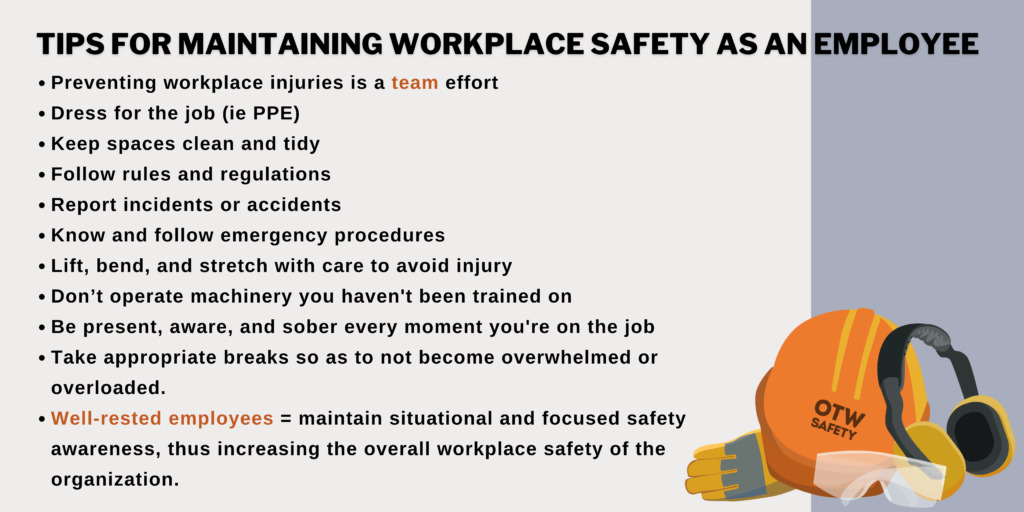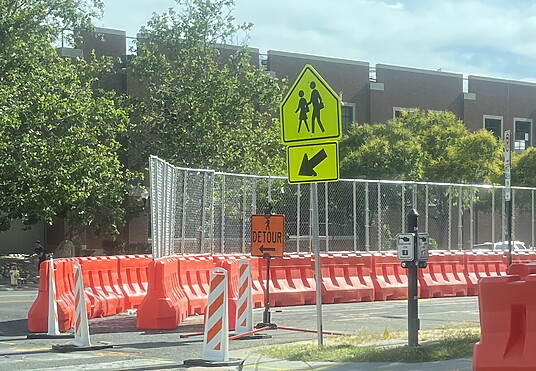Guide to Workplace Safety

What is workplace safety?
Workplace safety is an incredibly important factor of any organization’s atmosphere and operations. It is not limited to physical safety alone, but should encompass every aspect of physical, mental, and environmental health. It might involve managing workplace conditions, conducting safety risk assessments, collaborating with workers to best understand necessary safety measures, and implementing policies and procedures with the intention of ensuring the overall safety and wellness of each individual that works at an organization.
Why is workplace safety essential?
Workplace injuries and illnesses cost upwards of $170 billion nationwide (both direct and indirect costs) every year, according to the National Institute for Occupational Health and Safety, so it’s easy to see why safety in the workplace is such an important thing. Working to reduce injuries, fatalities, and sicknesses will not only make a company a better place to work, but can boost morale when workers feel that they are safe and cared for. It can also improve employee retention, maximize productivity, increase trust between your company and the community around it, and help reduce your overhead costs and regulate your bottom line.
The Occupational Safety and Health Administration (OSHA) and the World Health Organization (WHO) strongly recommend and advocate for occupational health safety in all they do. The WHO, specifically, encourages the development of policies and action plans for all levels of an organization; these plans should be geared towards the sector of work and industry that the company finds themselves in and focus on preventing and responding to injuries and hazards. The WHO also recommends that company leaders collaborate with necessary contributors to create safety and health-related programs that meet the needs of mental and environmental health, as well as deal with diseases and injuries in the workplace. All of this benefits the company and staff alike, and should be one of the main things any company leader prioritizes.
Where to start with workplace safety as an employer
The safety of any workplace starts with the organization itself! It is critical to establish policies, procedures, and guidelines that ensure safety remains high – while employees contribute to this on some level, when it comes down to it, ensuring the continued health and safety of all employees is the duty of the employer. This includes their physical health, a healthy workplace atmosphere, and their mental health – each aspect matters in a big way when maintaining the overall health and wellness of employees.
But how does one go about that?
Be proactive across the board
In all things safety, it is better to be proactive rather than reactive. An intentionality in proactivity speaks to the commitment one has to their business and their employees, so it is something well worth pursuing in any industry. Healthy employees make for a healthy business, so why wouldn’t you do everything you could to make certain your business is the healthiest it can be? Here are a few ways to start:
- A good place to begin: a safety risk assessment! These in-depth evaluations of a workplace’s safety conditions allow an employer to understand what they are doing well in terms of safety and what has room for improvement or needs an overhaul. (Keep an eye on our blog for our upcoming post on how to conduct one!)
- Implement and follow through on safety training to ensure that each employee has complete knowledge of the tasks they are expected to perform – it raises safety levels by bounds when everyone on the job is thoroughly trained on tasks, expectations, and equipment.
- Be prepared for injuries and emergencies, with first aid kits and emergency numbers easily accessible to anyone who might need to make use of them. Develop emergency plans that are easy to conduct if and when the time comes.
- Provide appropriate PPE for all employees; this includes petite individuals, plus size workers, and women. People are all shaped differently, especially between genders, so a one-size-fits-all or “size-down” mentality is not the answer. Much of the standard personal protective equipment issued to organizations is not created equally (and is generally based on the sizing of average-sized men) – so choose PPE that has inclusive sizing and form (whether coveralls, masks or respirators, gloves, headgear, or footwear) in order to best protect every person on the job.
- Keep equipment updated and in well-working condition. Regular maintenance and care means that equipment lasts and is safer to use than if neglected.
- Peruse OSHA’s Occupational Safety and Health Act of 1970 for more steps on ensuring workplace safety!
Most common safety issues and hazards faced
In occupational industries, failure to comply with regulations and safety standards is the number-one issue faced when it comes to maintaining proper safety levels.
Common regulation violations (per OSHA’s most cited violations of 2022) include:
- Machinery, powered trucks, and heavy equipment usage (training, proper use, etc.)
- Hazard Communication (training and proper labeling and use)
- Fall Protection (general requirements, ladders, and scaffolding)
- Personal Protective Equipment (respiratory protection and eye and face protection)
While common safety hazard and issues might include:
- Workplace Atmosphere
- Expected Workload
- Organizational Stress
- Chemicals, Gases, Dust, and Vapors
- Noise and Lighting
- Weather
Safety and prevention is possible
To reduce and/or prevent work-related injuries and fatalities, resources should be available to all employees at all levels of an organization. These resources and tools might look like:
- PPE (inclusive of sizing and gender, and properly fitted for all)
- On-site Training (by competent and fully-trained trainers)
- Worker’s Compensation Studies (like the Center for Worker’s Compensation Studies linked below)
- Collaboration with and for employees (across organization)
- Websites and Organizations that support health and safety (see resources below)
Workplace safety is for everyone
While ensuring overall workplace safety is, indeed, the duty of the employer, every individual can play a part in their own workplace’s safety and wellness culture! Every person deserves to work in an environment that is as safe as it can be, and being proactive in the creation of policies and procedures, in training, and in the follow-through of any incidents can help establish trust between employees and an employer. This has the potential to forge commitment to safety as a whole, strengthen confidence between parties, and deepen professional rapport. Workplace safety is for everyone!

Resources:
https://www.cdc.gov/niosh/index.htm
https://www.dol.gov/general/topic/safety-health
https://ohsonline.com/Home.aspx
https://www.osha.gov/workers/employer-responsibilities
https://www.cdc.gov/niosh/topics/workercomp/cwcs/default.html


